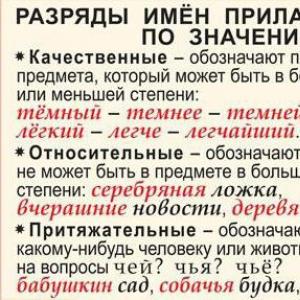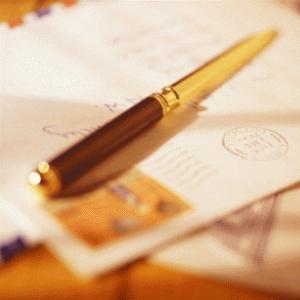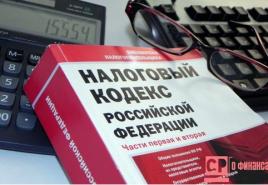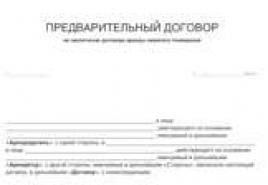How they deal with General Kozik. Lesnaya Lubyanka. Who lives in a secret village of luxury mansions? Lubyanka is not simple, but forest
KOZIK Emelyan Vasilievich
(19.08.1905–11.11.1990)
Head of the Main Directorate of the NKVD troops of the USSR for the protection of especially important industrial enterprises (03/08/1939–02/26/1941)
Major (1938)
brigade commander (03/09/1939)
Major General (06/04/1940)
Born in the village. Semyonovka, Chernigov province (later Semyonovka, Chernigov region) in a peasant family. He studied at the zemstvo school and higher primary school, which he graduated in 1920. He worked on his father’s farm, as well as at the mill, peat and forestry. Later his life was connected with military service. Volunteer of the Red Army since January 1923. Participant of the Soviet-Finnish and Great Patriotic Wars. He began his service as a private in the 130th Bohunsky Regiment of the 44th Infantry Division. After graduating from divisional school, he became a detached commander, a platoon commander in the same regiment. In 1924–1927 - cadet of the Kyiv Infantry School of Red Commanders named after N. Shchors. Receives an appointment to continue serving in the border troops. In 1927–1930 - platoon commander of the maneuver group, head of the outpost of the Olevsky border detachment. Here in March 1928 he was accepted as a member of the CPSU (b). In 1931–1932 - course commander of the 2nd school of border guards and OGPU troops (Kharkov). After completing the retraining courses for command personnel at the Higher Border School (April 1932), he returned to the Kharkov school, where he became the commander and head of fire training for an armored division.
The thirst to learn, the desire to replenish one’s military knowledge and obtain the missing general education helped to achieve admission to the Military Academy of the Red Army named after. M. V. Frunze, who graduated in 1939, immediately received an appointment to the high position of chief of industrial troops and the rank of brigade commander.

Commander of the 1st (46th) Infantry Division, Major General E.V. Kozik. Leningrad Front, 1943
After two years of command, in February 1941, due to the merger of the main directorates of industrial and railway troops, he was transferred to the vacant position of head of the Main Fire Department of the NKVD of the USSR.

Commander of the 327th Infantry Division, Major General E.V. Kozik. Leningrad Front, August 1944
However, the new field of activity does not bring him satisfaction: he is used to working in the army. In August 1941 he was accepted into a special group at the Academy of the General Staff and already in September of this year. sent to the active army on the Leningrad Front. Here he commands the 286th (September 1941 - March 1942), 1st (46th) (March 1942 - July 1943) divisions. This was a period of bloody battles for Leningrad. Due to the heavy losses of the 46th Infantry Division at the Nevsky Piglet, the command had serious complaints against Kozik; he was accused of inept organization of defense (although the main reason for the large losses was the insufficient strength of the defenders). It was decided to send him to study. In 1943, General Kozik studied for several months at the Higher Academy of the Red Army named after. K.E. Voroshilov and since December 1943 again in the active army. This time, commanding the 351st Infantry Division of the 1st Ukrainian Front, he participates as part of the 60th Army in a number of offensive operations, including Rovno-Lutsk, where his division distinguished itself in battles and was awarded the honorary name “Shepetovskaya” (Order of the Supreme Commander-in-Chief dated February 11, 1944 No. 73). However, even here there were conflict situations. And before, some shortcomings in his behavior were noted: harsh, quick-tempered. Now it has become known that he abuses alcohol. On April 26, 1944, the front commander, Marshal G.K. Zhukov, sent a personal letter to Kozik on this matter. In a detailed explanation dated May 6 of this year. General Kozik assured the marshal that he would not allow this to happen again. And he confirmed this throughout his subsequent military service.

Commander of the 286th Infantry Division, Major General E.V. Kozik. Leningrad Front, 1941

E.V. Kozik, Chairman of the Council of Veterans of the Ground Forces of the Leningrad Front and the Council of Veterans of the 46th Luga Order of Suvorov Rifle Division, speaks at a rally in the village. named after Morozov. May 9, 1984
Since July 1944, Emelyan Vasilyevich commanded the 327th Infantry Division, again on the Leningrad Front, now as part of the 6th Infantry Corps of the 23rd Army. August 15 this year Corps commander Major General Avdeev gives E.V. Kozik a good description (he understands the situation well; there are shortcomings and shortcomings, but “Energetic, persistent, demanding of himself and his subordinates, appropriate for the position he holds”). The division under his command successfully fought on the Karelian Isthmus.
After the war he continued his military service. In 1952 he graduated from the Higher Academic Courses at the Academy of the General Staff.
In 1954 he was transferred to the reserve, then retired. He was actively involved in social activities. For many years he was the chairman of the council of veterans of the ground forces of the Leningrad Front and the council of veterans of the 46th Luga Order of Suvorov II class. division page.
E.V. Kozik had 18 state awards.
Essay: Kozik E. On the Ivanovo “patch” / Compiled by: K. K. Grishchinsky // Veteran. - Vol. 2. - L., 1980. - pp. 164–168.
Literature and sources
Orders Supreme Commander-in-Chief during the Great Patriotic War of the Soviet Union. - M., 1975. - P. 116.
Story internal troops: Chronicle of events (1811–1991). - M., 1995. - P. 140.
CMVV Ministry of Internal Affairs of the Russian Federation, O.4, D. 15a, P. 6.
This text is an introductory fragment. From the book Secrets of the Time of Troubles [with illustrations] author Bushkov AlexanderSOMEONE EMELYAN The events known as the “Pugachev rebellion” still conceal many mysteries. The very scope of this enterprise is unique - nothing like this has ever happened in Rus' before. The Troubles are a different matter; it was a real civil war, not a rebellion. Meanwhile against
From the book Guards Century author Bushkov Alexander From the book The Shine and Blood of the Guards Century author Bushkov AlexanderSomeone Emelyan The events known as the “Pugachev rebellion” still conceal many mysteries. The very scope of this enterprise is unique - nothing like this has ever happened in Rus' before. The Troubles are a different matter; it was a real civil war, not a rebellion. Meanwhile against
From the book of 100 great plagues author Avadyaeva Elena Nikolaevna From the book The Path to the Mainland author Markov Sergey NikolaevichSERGEANT EMELYAN BASOV In 1726, we mentioned Emelyan Basov, who sailed to the mouth of the Lena. He and his companions scouted the sea route to the east for two years. By 1743, Basov managed to visit Okhotsk in Kamchatka and go to Moscow to deliver tribute sables and foxes to
From the book Russia that never existed [Riddles, versions, hypotheses] author Bushkov AlexanderSomeone Emelyan The events known as the “Pugachev rebellion” still conceal many mysteries. The very scope of this enterprise is unique - nothing like this has ever happened in Rus' before. The Troubles are a different matter; it was a real civil war, not a rebellion. Meanwhile against
From the book Heroes, Villains, Conformists of Russian SCIENCE author Shnol Simon Elevich From the book Jews of Russia. Times and events. History of the Jews of the Russian Empire author Kandel Felix SolomonovichEssay forty-one Jews in the Russo-Japanese War. Pogroms of 1904–1905 "Time of Troubles. October pogroms of 1905. After almost every defeat, Jewish communities cried out for mercy: “Urgent help is required! Donations are asked to be sent to this address." A
From the book Favorites of the Rulers of Russia author Matyukhina Yulia AlekseevnaIvan Aleksandrovich Serov (1905 - 1990) One of the largest figures in domestic intelligence, Ivan Serov was born in the village of Afimovskoye, Vologda province. His father was a village police officer and, according to some sources, after the revolution he fled, leaving his family. This fact by Ivan Serov
From the book Famous Actors authorGreta Garbo Real name: Greta Louise Gustafson. (b. 09.18.1905 - d. 04.15.1990) Legendary American film actress, Swedish by birth. Silent film star, performer of the roles of mysterious and femme fatales in 26 dramatic and psychological
From the book The Death of Vlasov's Army. Forgotten tragedy author Polyakov Roman EvgenievichAll-Union Memory Watch of 1990 August 15-22, 1990 To participate in the All-Union Memory Watch of 1990, the RIF club sent a group of 8 people under the leadership of P. Savilov to the Novgorod region. We got to Leningrad by train, by train to the station. Chudovo, by bus to the village.
From the book A Short Course in the History of Russia from Ancient Times to the Beginning of the 21st Century author Kerov Valery VsevolodovichTopic 48 Foreign policy of Russia (end of the 19th century - 1905) Russo-Japanese War of 1904–1905 PLAN1. Conditions and tasks of Russian foreign policy.1.1. International position.1.2. Strategic foreign policy objectives: In Europe. – In Asia.1.3. Internal political tasks of foreign
From the book Internal Troops. History in faces author Shtutman Samuil MarkovichTIMOFEEV Nikolai Vasilyevich (12/15/1905 -?) Acting Head of the Operational Troops Directorate of the NKVD of the USSR (12/16/1941–04/13/1942) Colonel (04/15/1941) Born in the village. Boltunovo, now Khvalynsky district, Saratov region, in a peasant family. Graduated from a rural school. I worked as a laborer for various people, helped
From the book Great Catherine. Born to rule author Sorotokina Nina MatveevnaEmelyan Pugachev The people composed a legend that Razin, leaving this life, promised to return in a hundred years. And he returned under the guise of Don Cossack Emelka Pugachev. Peasant unrest always rocked the throne in Rus', but Emelyan Pugachev staged a real war against Catherine
From the book Women Who Changed the World author Sklyarenko Valentina MarkovnaGarbo Greta Real name – Greta Louise Gustafsson (born in 1905 – died in 1990) Legendary American film actress, Swedish by birth. Silent film star, performer of the roles of mysterious and femme fatales in 26 dramatic and psychological films.
From the book Complete Works. Volume 12. October 1905 - April 1906 author Lenin Vladimir IlyichList of unsearched works by V. I. Lenin (October 1905 - April 1906) 1905 1905 ABSTRACT ON THE LATEST POLITICAL EVENTS IN RUSSIA The announcement of the Committee for the Foreign Organization of the RSDLP states that on November 2 (October 20), 1905, at a meeting of Russian Social Democrats in Geneva
The FSB, the Border Service and the Main Military Prosecutor's Office came out of a delicate situation after discovering the dacha of a border guard general in the border zone.
The security forces responded in an original way to the October investigation of the Anti-Corruption Foundation, during which the dacha of FSB Colonel General Nikolai Kozik was discovered in a zone prohibited for engineering structures on the border with Finland. According to the Land Code of the Russian Federation, only engineering, technical and protective communications can be located in this zone.
Lawyers of the Anti-Corruption Foundation received an official response to their request to the Main Military Prosecutor's Office. It was filed on December 2, 2016, following an investigation by the fund.
In the response of the GVP, which was signed by the head of the 4th department - the deputy head of the Department for Supervision of the Execution of Federal Security Laws, Atamanyuk, it is reported that the land plot with an area of 6600 square meters. m in the Vyborg district of the Leningrad region, which is in question, is located 4 kilometers from the state border of the Russian Federation with Finland.
PCB and special equipment “plow” / ©Google Maps
According to the military supervisory agency, “the site is located on agricultural lands with the right to use them for dacha farming.”

And the energized fence, with cameras and “Mines” signs, as well as a well-groomed control strip with a nearby border harrow, “is not used for its intended purpose,” the Main Military Prosecutor’s Office reported. The technical structure serves as an obstacle to the access of wild animals to the roads, the document says.
The prosecutor's office clarified that the plot was actually acquired by Nikolai Kozik in May 2014 from the previous owner on the basis of a purchase and sale agreement in accordance with the legislation of the Russian Federation. The general, according to GV, bought a summer cottage plot on a general basis, without using his official powers.

The FSB, to which Navalny’s foundation also sent a request to check the legality of Kozik’s actions, did not find any violations. However, the verification of the legality of transferring border lands to a category that allows for dacha farming on them, which is being carried out at the request of FBK lawyers by the Leningrad Region Prosecutor's Office, has not yet been completed.

Let us recall that in October, FBK employees, after analyzing Google Maps satellite images, discovered residential buildings in the forbidden border zone. Subsequently, according to Rosreestr documents, it turned out that the plot of 6600 sq. m belongs to Colonel General of the FSB Nikolai Leonidovich Kozik, who holds the post of head of the border guard department of the Border Service of the FSB of Russia.
General Nikolai Kozik is the owner of a dacha on the border of Russia and Finland, which Alexey Navalny spoke about in his investigation. The editors of Russiangate followed his trail and discovered a secret elite village where the second plot owned by the general is located. In the cooperative with the characteristic name “Lesnaya Lubyanka,” Kozik neighbors with the director of foreign intelligence, Sergei Naryshkin, and high-ranking officials.
Lubyanka is not simple, but forest
“Lesnaya Lubyanka” is the name of a secret homeowners’ association in the Leningrad region, which, according to the Kontur-Focus database, includes Kozik. Why secret? Because there is almost no information about Lesnaya Lubyanka in the public domain. It is only known that a non-profit partnership with that name was registered in the city of Vsevolozhsk, Leningrad Region, and that on social networks it is referred to exclusively as a local “elite village for its own people.”
Our information
Nikolai Kozik - Head of the Regional Border Directorate of the FSB of Russia for Northwestern Federal District, awarded the Order "For Military Merit", "For Service to the Motherland in the Armed Forces of the USSR" III degree, five medals.
According to the Counter-Focus database, the co-founders of Lesnaya Lubyanka are 63 people. Among them are the already mentioned head of the Foreign Intelligence Service Sergei Naryshkin, the chairman of the financial committee of the Vsevolzhsky district Anna Popova, the senator from United Russia Valery Vasiliev and Alexander Nikitenko, the full namesake of the former head of the Ministry of Internal Affairs for St. Petersburg and the Leningrad region.

List of high-ranking officials and businessmen - co-founders of Lesnaya Lubyanka
Neighbor to neighbor friend, comrade and business partner
Everyone knows: it is better to be on good terms with your neighbors. After all, a good neighbor can help in business too. Thus, one of the members of the partnership, the head of Resurs-komplekt LLC Gleb Bondarev, has repeatedly won tenders for the supply of equipment and wetsuits worth more than a million rubles from the Vanino Trade Port company. Russiangate suggests that this could not have happened without the help of his neighbor in the dacha - Dmitry Babich, the namesake of the deputy of the FSUE Sakhalin Ports Administration.Another member of the partnership, the head of the construction companies UNR-17 and SMU-57 Yuri Lopatin, has long and successfully collaborated with the St. Petersburg Ministry of Internal Affairs and wins tenders for the construction and repair of department buildings. His neighbor, Alexander Lvov, is directly related to the internal troops of the Ministry of Internal Affairs: he commanded the troops of the North-Western District of the Internal Troops. Will Lopatin receive an order from the FSB in the near future? It is quite possible, because the already mentioned Kozik, his neighbor, holds the post of head of the Regional Border Directorate of the FSB of Russia for the North-Western Federal District.
But the most interesting member of the partnership is Leonid Vorobyov, the founder of Stroyimpuls SMU-2 LLC. In 2013, this construction company was involved in one of the most notorious scandals of recent years - the case of corruption in the Ministry of Defense.
Then it turned out that the general director of the Stroyimpuls SMU-2 company, Sergei Amelin, acquired buildings and land plots that previously belonged to the Ministry of Defense. Before this, he concluded several contracts with one of the subsidiaries of Oboronservis, an enterprise controlled by the ministry. From them he received an advance payment, which he spent on the purchase of buildings. It is this scheme – concluding contracts with shell companies – that is often used to illegally withdraw funds.

Was it not with the money from the Ministry of Defense that Leonid Vorobyov built himself a dacha in Lesnaya Lubyanka?
Later, the official representative of the Investigative Committee, Vladimir Markin, denied Sergei Amelin’s connection with the corruption case. He said that Amelin “during the investigation into the theft of military property, the Main Military Investigation Department was not summoned or interrogated.”
Thus, the fact of corruption of the head of the Stroyimpuls SMU-2 company - and his employer Leonid Vorobyov, who could not have been unaware of the company's contracts - was not proven. And yet, Stroyimpuls, according to Russiangate, has multibillion-dollar debts to the Russian Ministry of Defense. The question arises: was it not with money from the military department that Vorobyov built himself a dacha in Lesnaya Lubyanka?
This hypothesis is indirectly confirmed by the fact that the co-founders of the elite village “Lesnaya Lubyanka” are high-ranking officials from the FSB and internal troops of the Ministry of Internal Affairs - in particular, the same Nikolai Kozik. It was with these structures that the Stroyimpuls company worked.
Border is locked tight
Journalists would not have paid attention to Lesnaya Lubyanka if the founder of the Anti-Corruption Foundation, Alexey Navalny, had not talked about another dacha of General Nikolai Kozik, which was built on the Russian-Finnish border. According to Navalny, the general’s cottage is located not just on the border strip, where local residents are allowed to stay, but in a special zone. This is an area surrounded by an energized fence, with towers and a control strip, where people without special permission are strictly prohibited from even entering, the anti-corruption official argued.

Russiangate denied Navalny’s information: the editors managed to find out that the territory on the Russian-Finnish border where Kozik’s dacha is located is not a specially protected site. The fence photographed via Google Maps, pictures of which Navalny posted in his post, is part of the old barriers on the Saimaa Canal territory that remain from the Cold War. Residential development is officially permitted in this area.
The head of the FSB border department Nikolai Kozik could guard the border without leaving home
Thus, formally, General Kozik did not violate the law by building his “dacha on the border.” Even closer to it is another cottage community, about which there is almost no information in the public domain - “Black Island”.
Information has repeatedly appeared on local websites that its residents are far from simple people. “Nearby is the cooperative of generals and deputies of the DNP “Cherny Island” of the same name,” an anonymous user said in comments to a map of the area on the Wikimapia website. This information is confirmed by an advertisement discovered by Russiangate for the sale of a house in the nearby village of Torfyanovka. “Thirty meters from the porch to the shoreline, pristine taiga, hunting, fishing, mushrooms! Thousands of hectares of untouched nature, in the border zone with Finland, which will be shared with you by respectable neighbors, a total of 23 households belonging to people with high social status (deputies, generals),” the ad says.
The history of “Black Island” is as follows: in August 2010, the governor of the Leningrad region, Valery Serdyukov, signed an order to transfer a plot of land in the Vyborg district of the Leningrad region with an area of 47,400 square meters from reserve land to agricultural land. Two months later, the Phikala dacha non-profit partnership (DNP) was registered there, and a large plot of land was transferred into its ownership. Two months later, representatives of the DNP again appealed to the administration, this time to change the status of the land to “intended for dacha farming.” The founders of the DPP were three people. Among them, Russiangate discovered a familiar name - Leonid Vorobyov, the already mentioned founder of Lesnaya Lubyanka.
Four years later, the name of General Nikolai Kozik appeared in the documents, who registered ownership of 6,600 square meters of this land and built there the “dacha on the border” discovered by Navalny.
Nikolai Kozik and Leonid Vorobyov are two names associated with two large holiday villages in the Leningrad region. These people - as well as other residents of elite villages surrounded by barbed wire and high fences - are not just “good neighbors”, they form a network of contacts between government officials and big business. Although the facts announced by Russiangate, of course, are not conclusive evidence of a criminal conspiracy between officials and businessmen, they raise questions: what tenders, contracts and socially significant problems are discussed on summer evenings at dachas in Lesnaya Lubyanka, Black Island and dozens of other elite villages ?
Colonel General of the FSB Border Service Nikolai Kozik built a dacha in the zone of engineering structures on the state border with Finland. This was reported by Russian oppositionist Alexei Navalny, who published the results of the investigation on his blog.
According to him, the site is located in the Vyborg district of the Leningrad region on the shore of Lake Povarskoye. This follows from satellite images and Google Maps photos.
This territory belongs to the zone of engineering and technical structures, in which it is prohibited to stay and the lands of which have been withdrawn from circulation, Navalny writes.
He published an extract from Rosreestr, from which it follows that the specified land plot with an area of 6.6 thousand square meters. m belongs to Nikolai Vladimirovich Kozik. He is a colonel general of the FSB, deputy head of the border service of the FSB of the Russian Federation, who is responsible specifically for protecting the state border.
“Really, it’s just like in the Soviet joke. The dude privatized a piece of the state border,” Navalny summed up.
As reported Korrespondent.net , Alexei Navalny previously announced the discovery. The area of the estate is 80 hectares, which is almost three times the area of the Kremlin.
The co-owners of the Lesnaya Lubyanka cooperative, which owns land near the border with Finland, are the deputy head of the border service, Colonel General Nikolai Kozik, the head of the SVR Sergei Naryshkin, the senator from United Russia Valery Vasiliev and the ex-chief of the Ministry of Internal Affairs for St. Petersburg and the Leningrad region Alexander Nikitenko
The Anti-Corruption Foundation (FBK) of Alexei Navalny claims that the full namesake of the deputy head of the border service of the FSB of Russia, Colonel General Nikolai Kozik, owns a dacha, which is located in the zone of engineering structures on the state border with Finland. A new investigation was published on Navalny’s blog.
Representatives of the FBK discovered buildings in a place that, according to them, belongs to the zone of engineering structures in the area of the Russian-Finnish border, after analyzing satellite images and photos of Google Maps. The blog also published an extract from Rosreestr, from which it follows that the land plot discovered by FBK with an area of 6.6 thousand square meters. m belongs to Nikolai Vladimirovich Kozik. As the fund points out, the land in the zone of engineering structures has been withdrawn from civil circulation.

Employees of the public relations center of the FSB of Russia were unavailable for comment.
As RBC found out, a plot of land with an area of 47.4 thousand square meters. m, located in the area of the village of Druzhnoselye and Lake Povarskoye (the Kozika site also belongs to it), in 2010 it was transferred from the category of reserve land to the category of agricultural land. An order on this was signed in 2010 by Valery Serdyukov, who at that time served as governor of the Leningrad region. After this, as follows from the cadastral passport, the property was divided into several sections.
Six plots of land for dacha farming, one of which belongs to Nikolai Kozik, were formed in 2011, according to an extract from the State Real Estate Cadastre (GKN) obtained by RBC. Prior to this, the land was assigned to the dacha non-profit partnership “Pikhkala,” as follows from the resolution of the head of the municipality of the Vyborg district of the Leningrad region, published in December 2010.
Vorobyov and Kozik, according to SPARK, are currently also co-owners of another non-profit partnership, the Partnership of Individual Developers Lesnaya Lubyanka, which is registered in the city of Vsevolozhsk. According to SPARK, Kozik, who is a co-owner of Lesnaya Lubyanka, was previously the head of the FSB department for St. Petersburg and the Leningrad region. The main activity of the partnership is management of the operation of the housing stock for a fee or on a contractual basis.

The co-owners of Lesnaya Lubyanka, according to SPARK, also include the head of the SVR Sergei Naryshkin, the senator from United Russia Valery Vasilyev, the head of the M-11 highway department of the FKU Uprdor "Russia" Alexander Myatiev, as well as Alexander Nikitenko, the namesake of the ex-chief of the Ministry of Internal Affairs in St. Petersburg and the Leningrad region.
Maria Bondarenko, Alena Makhukova, Elizaveta Focht
« Official website of Alexei Navalny ", 10.11.16, "The dacha is right on the state border - this can only happen in Russia"
Sometimes you come across a small case in your work, but damn, how revealing it is. It is necessary to start a section for such people as “Leviathan News”, because it is no longer possible to be surprised by this, we will simply shrug our shoulders and say: Well, this is not a state, but a Leviathan, and that’s how it should be.
For example, here we found the dacha of an FSB general, and not just anywhere, but right on the state border. Behind the electric fence and control strip. According to the law, land there is generally withdrawn from civil circulation. Nevertheless, he built it and designed it.
It seems like a particularity, but it’s so blatant against the backdrop of millions of owners of dachas, garden plots, garages, shops, tents, stalls, to which various inspectors go every single day with reports on the topic “I built it wrong, I connected it wrong, I drew the wrong line, I didn’t design it that way.” People are fined, dragged to court, and their land is forcibly confiscated - they are simply exiled from the world. And here is a dacha on the border.
I decided to record a new video about this:
And this is the story.
There is a border between Russia and Finland. As expected, the border consists of border zone (5-30 km), only local residents or persons with passes can stay there, and zones of engineering structures (2-3 km).
The zone of engineering and technical structures is exactly what is shown in films about border guards. A fence under weak current (triggered by touch), a control strip and all that stuff.
It is prohibited to be in this area. Entering it is an attempt to illegally cross the state border and guarantees you a criminal case (for example, there are many of these).
So let's use Google Maps photos and satellite photos to take a virtual trip to the most beautiful, but forbidden places on the border with Finland.
We see a fence.

We see the control strip.

We see a harrow used by border guards.

We see a sign “mines in 100 meters”.

We see a dacha. INSIDE THE ZONE OF ENGINEERING AND TECHNICAL STRUCTURES.

We rub our eyes and look from above:

Well, yes, it’s really a dacha on the shore of a lake in a restricted area, which is regulated by law as follows:
By virtue of subparagraph 10 of paragraph 4 of Article 27 of the Land Code of the Russian Federation, land plots occupied by federally owned engineering and technical structures, communication lines and communications built in the interests of protecting and guarding the State Border of the Russian Federation are confiscated from their circulation.
We freak out and run to the registry:

It's impossible, but it's true. Dacha of individual Nikolai Leonidovich Kozik
Let's Google, what kind of amazing Kozik Nikolai Leonidovich is.
We immediately stop being surprised. This is a colonel general of the FSB, deputy head of the border service of the FSB of the Russian Federation, who is responsible specifically for protecting the state border.
Really just like in the Soviet joke. The dude privatized a piece of the state border.
"NewsRu.com" , 08/19/16, “The FSB wrote a draft presidential decree giving it the right to seize private lands”
The Federal Security Service (FSB) of Russia has developed a draft presidential decree, in which it proposed to grant it the right to seize land plots and facilities located on them for state needs. The draft decree was published on the portal of draft regulations.
The FSB requests that it be given the right to make decisions on the seizure of land plots and real estate located on them for state needs “on the grounds provided for by federal laws, in the relevant area of jurisdiction of the FSB of Russia.” The intelligence service proposes to make a corresponding change to the Regulations on the Federal Security Service of 2003.
The explanatory note to the document states that the seizure of land will be carried out only in “exceptional cases related to the implementation of international treaties of Russia, construction, reconstruction of objects of state and local importance, as well as on other grounds established by federal laws.”
The intelligence service makes the following argument: privately owned property sometimes needs to be confiscated to ensure the protection and protection of state borders. In some cases, the border needs to be marked in accordance with the requirements stipulated by documents on demarcation and re-demarcation of the state border, which are an integral part of international treaties on the border regime. In particular, the borders with Latvia, Lithuania, Ukraine, Azerbaijan and Kazakhstan, Estonia, Belarus, Georgia, Abkhazia and South Ossetia are currently not fully finalized, the FSB points out.
The intelligence service explains that the powers proposed by the draft decree will allow the intelligence service to fully ensure the tasks assigned to it by law.
The FSB is not the first law enforcement agency to request the right to seize land for the needs of the state. Earlier in August, the Federal Security Service (FSO) also published a draft presidential decree in which he proposes to vest himself with the powers to seize land.
As Kommersant reminds, the procedure for confiscating land for state needs is now established by the Land Code, which states that authorized government agencies can make such decisions. This right is directly provided for in regulations, for example, on the Federal Agency for Subsoil Use and on the Ministry of Telecom and Mass Communications. The current version of the Land Code provides that land can be confiscated in “exceptional cases” related to the implementation of international treaties, construction and reconstruction of state-owned facilities (for example, highways, federal transport facilities, nuclear energy facilities and state energy systems).
However, the Code allows for other grounds if they are provided for by federal laws. Moreover, if real estate objects are located on the plots claimed by the state, then they are also confiscated, and their owners must be paid compensation. One of the most striking examples of the application of this procedure was the seizure of land for the construction of Olympic facilities in Sochi.







